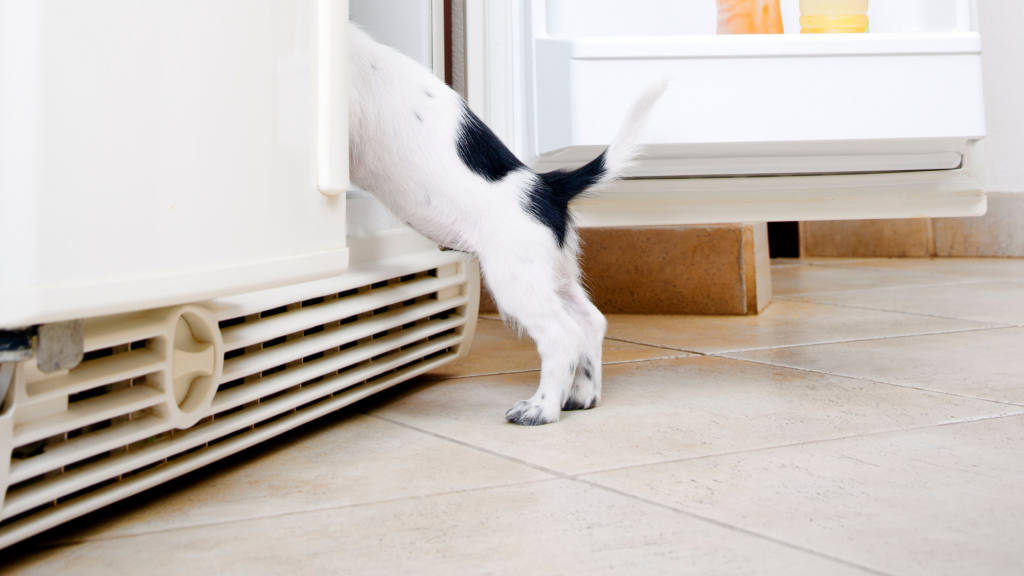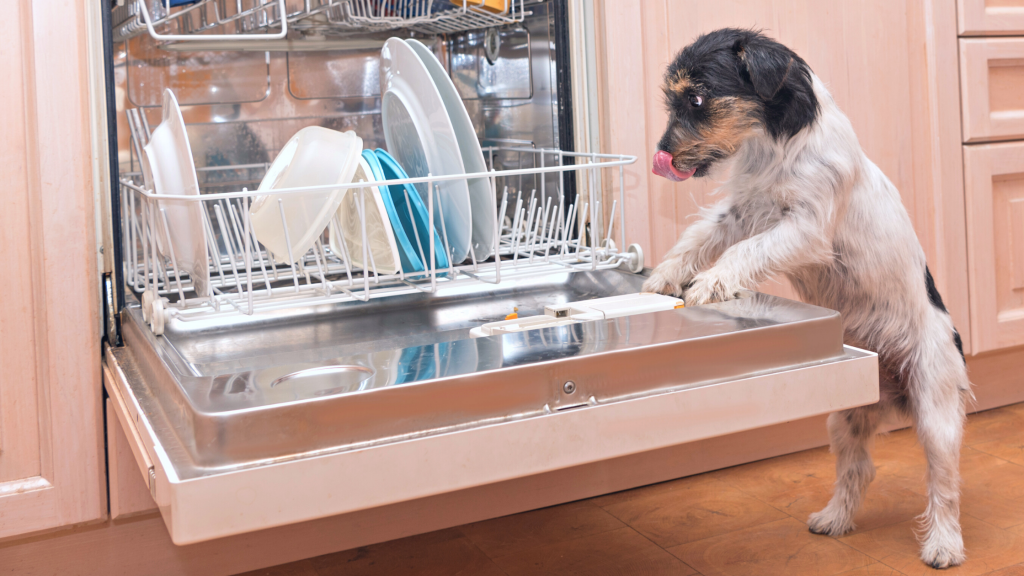5 Things Around the House You Didn’t Know You’re Supposed to Clean

Think your home is clean? You probably missed a spot.
You may or may not already have a pretty good cleaning routine down, like scrubbing the toilet and wiping off the kitchen counters, but we can practically guarantee there are dark hidden places in your home right now that have not seen the light of day in years. Not to be a downer, but these could be causing health issues or even safety hazards if they continue going unaddressed.
But that aside, it’s also just kinda gross. So let’s dive in and get started on the things around the house you didn’t know you were supposed to clean!

Under the fridge and stove
The area beneath large kitchen appliances can be a hotbed for bacteria. A dark, moist environment with tiny cracks and crevices makes it easy for mold and mildew to fester, which can make you sick.
To clean this area, carefully pull out the fridge or stove, being sure not to accidentally yank the plug from the outlet. Once you can reach, unplug it so you can scootch the appliance forward far enough to expose all the floor space that’s been collecting dirt since the time it was originally installed.
Start by checking the coils and fan for dust buildup. Don’t skip this step, as dust buildup can shorten the life of your appliances, making them work harder, and even be a fire hazard. Use a coil brush to reach all the way to the inner depths of the coils and dislodge the dust bunnies, then use an extender attachment to vacuum up all the dust, hair, and crumbs from around the back of the appliance and on the floor.
After all the loose bits are gone, give the floor a thorough scrub with either a mop or a scrub brush. Use warm soapy water to wipe down the wall and surrounding cabinets to get rid of any grease buildup. If you spot any mold or mildew, spray it down with an antifungal cleaner and let the area dry completely before pushing the fridge or stove back into place.

Inside the dishwasher
Why clean the appliance that literally cleans itself? Take a peek inside the filter to find your answer.
While your dishwasher may be great at cleaning dishes, all that dislodged food has to go somewhere. Your dishwasher doesn’t have a garbage disposal so it’s collecting soggy leftovers in the bottom, and contributing to a foul smell over time.
To clean your dishwasher: Pull out the racks completely, unscrew the spray arms, and take the filter out of the very bottom. Spray down the inside of the dishwasher with a grease-fighting cleaner or distilled vinegar, and use the same cleaner to scrub down the filter and spray arms while the dishwasher soaks for a few minutes.
Wipe down the top, sides, bottom and the inside of the dishwasher door. Use a toothbrush to remove any calcified grime. When everything is clean, put all the pieces back together and run an empty cycle on hot with 1 cup of distilled vinegar. The vinegar cycle will get rid of any remaining odors and ensure any leftover residue gets washed away before your next load of dishes.

Toothbrush holder
The inside of your toothbrush holder is probably secretly caked in old toothpaste and mineral buildup, completely unbeknownst to you, as well as collecting small fecal particles from the toilet. This is also a good time to replace your toothbrush, which should be phased out every 3-4 months anyway.
Use hot water and an old toothbrush to scrub away any toothpaste residue inside the toothbrush holder. If you find mildew, use an antibacterial cleaner, and be sure to rinse the holder thoroughly before using it again.

Showerhead and drain
Does your showerhead have a few jets of water that are shooting the wrong way? If so, it’s time to clean your showerhead.
Scrub the showerhead with a sponge or toothbrush to dislodge mineral buildup. Fill a plastic sandwich baggie with a 50/50 solution of hot water and white vinegar, and secure this to the showerhead using a rubber band or twist tie. Let that hang out for at least half an hour* (or overnight), then wipe it down with hot water.
While that’s soaking, it’s a great time to clean the drain. If you can, pry the drain cover up (using a butter knife works well in a pinch), and pull out as much hair as you can. Pack the drain with a cup of baking soda, then pour about a cup of white vinegar on top, letting the bubbles do all the cleaning for you. After about 15 minutes, pour some very hot water down the drain to flush everything out and put the drain cover back.
*If your shower fixture is made of brass, gold, or nickel, only soak it for 30 minutes

Dryer vent
You already know to clean the lint trap between loads, but when was the last time you cleaned the dryer vent? It’s probably packed with lint, which might be why towels take an extra cycle to dry, but a buildup of lint can also be a dangerous fire hazard.
Unplug the dryer, and turn off the gas supply (if applicable). A long vent cleaner brush works ok, but there are vacuum attachments specifically made for this job that will make things go faster.
Start by taking out the lint trap and cleaning out that crevice and anywhere else you spot lint fuzzies building up. Before putting the lint trap back, scrub it down with hot water to remove the waxy coating that builds up from using fabric softener.
Pull the unplugged dryer out from the wall and detach Tinman’s arm (dryer vent hose). Shove your vacuum attachment inside anywhere it’ll fit, including the dryer’s exhaust duct, the vent hose, and underneath the dryer where lint likes to collect.
For those who are in a house rather than an apartment building, grab an extension cord and wheel your vacuum outside to the external dryer vent, and wave to any neighbors giving you puzzled looks. Use your vacuum extension to dislodge as much lint as you can reach.
If you haven’t cleaned your dryer vent since you moved in 15 years ago and notice that it looks pretty backed up, you may want to consider calling a professional. They have equipment that can reach far deeper than your vacuum, and that extensive buildup of lint is a fire hazard that you don’t want to overlook.

Final Thoughts
Deep cleaning is a necessary activity to do at least once a year because it’s an opportunity to do the maintenance work that’s neglected or forgotten most of the time. Although it’s not the most glamorous part of living in a home, deep cleaning is beneficial to your family’s health and safety, as well as for your wallet by extending the lifespan of your appliances.
If you’ve already cleaned everything mentioned on this list, we are seriously impressed and you should consider yourself part of the Cleaning Elite. What other places around the home do you think most people skip? Share your tips, and happy cleaning!

